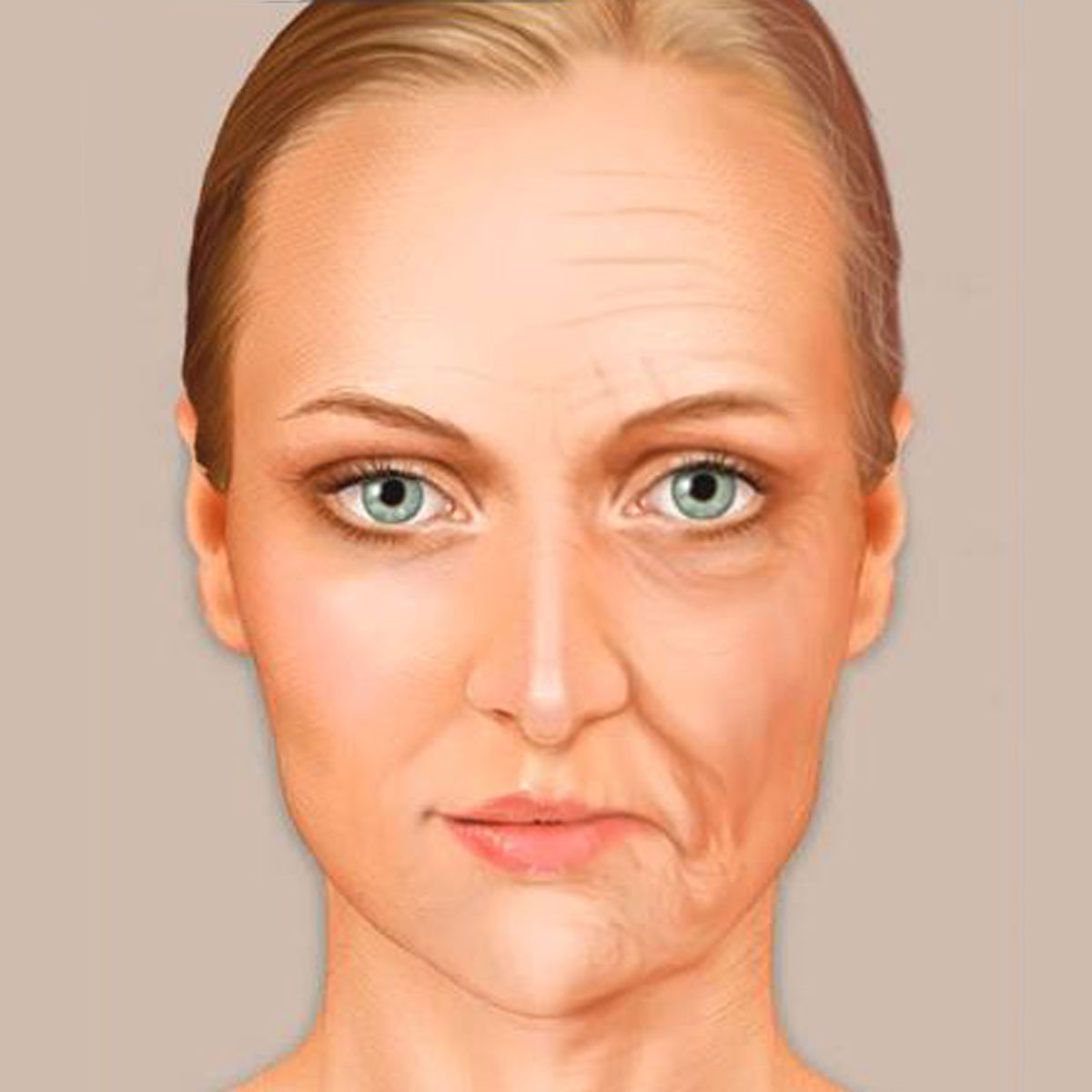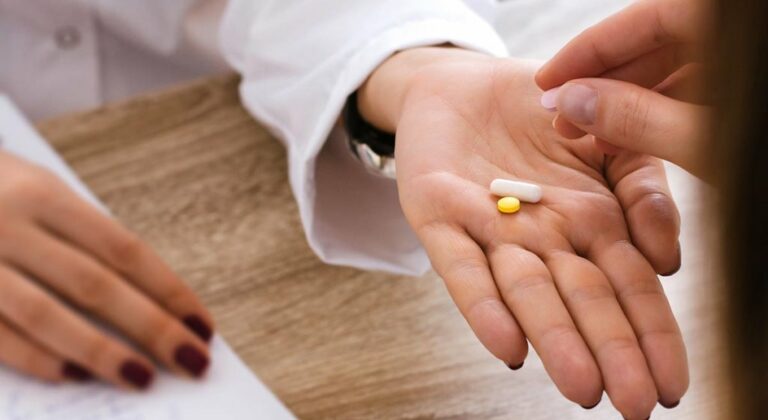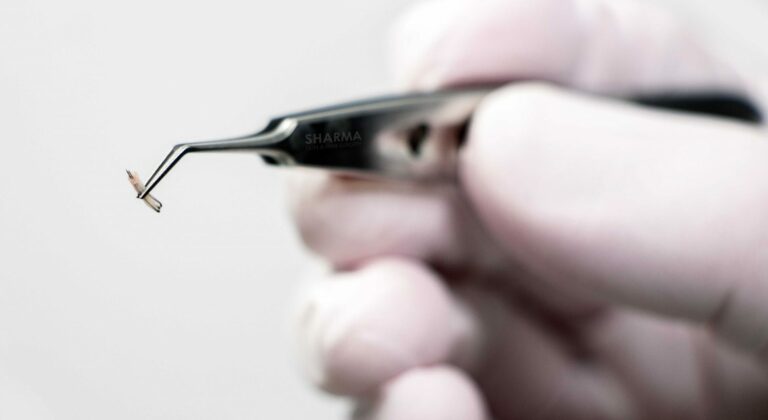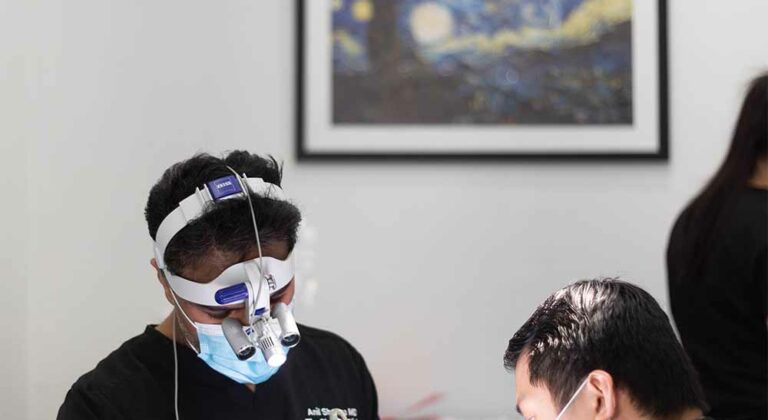Why Your Face Ages and How Sharma Skin & Hair Surgery Can Help
As we age, we start to undergo changes in every nook and cranny of our bodies. Along with the experience and wisdom that comes with getting older, there are diverse changes that happen in our outward appearance. Typically, the changes we see in our faces are at the forefront. The skin, soft tissues (subcutaneous fat, muscle, and fascia), and structural support (bone and teeth) are individually affected by the ageing process. They work together to determine your facial appearance throughout life.
Many factors contribute to facial ageing. This can include gravity, subcutaneous fat redistribution and loss, hormonal imbalance, excessive sun exposure, diet, and smoking. Other environmental factors that have shown to affect facial appearance include mental stress, work habits, drug abuse, and disease.
Signs of Facial Ageing
There are some obvious and not-so-obvious signs of ageing that can be seen in the face:
- The forehead skin starts to lose its elasticity and subcutaneous fat, which results in the appearance of more obvious frown lines and wrinkles.
- Eyebrows begin to droop downwards resulting in an unwanted, tired, or angry appearance.
- The eyes begin to appear hollow and deep-set as the cheek bones right beneath the eye socket start to sag.
- Subcutaneous fat decreases in the cheek area leading to a loss of volume. This gives them more of a hollow appearance.
- The tissues around the eyes, including some of the muscles supporting the eyelids, start to weaken. The fat that was supporting the eyes move forward which shows up as dark bags giving a more tired, older appearance.
- The tip of the nose starts to droop due to weakened connective tissue supporting the nasal cartilage.
- The lips start to bend downwards because of weakening muscles strength and loss of fat deposition.
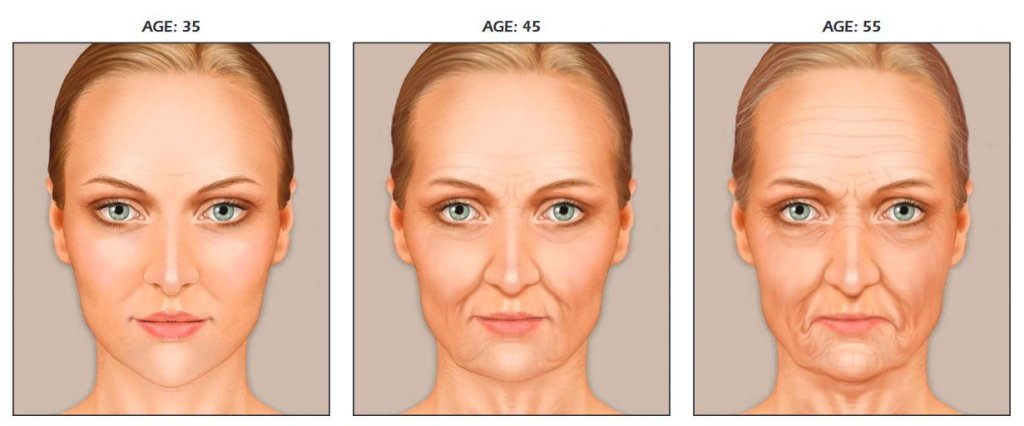
The Role of Bone
Skin and fat aren’t the only structures in our faces. Our facial bones provide the necessary scaffolding for our muscles, fats, and skin to drape over. As we age, the bones in our face lose density just as they do in the rest of our body.
For example, we see a loss of bone density in the upper and lower jawbone that causes a notable reduction in facial height, and a slight increase in facial width and depth. The overall effect is to cause the lower face to widen out and for jowls to form. Little perioral lines start to show up and take away our youthful pouts due to bone loss in the lower jaw. This volume continues to decrease over the years, causing the soft tissue of the lower face to have less support, resulting in a softer, more oval appearance to the lower portion of the face giving a more aged appearance.
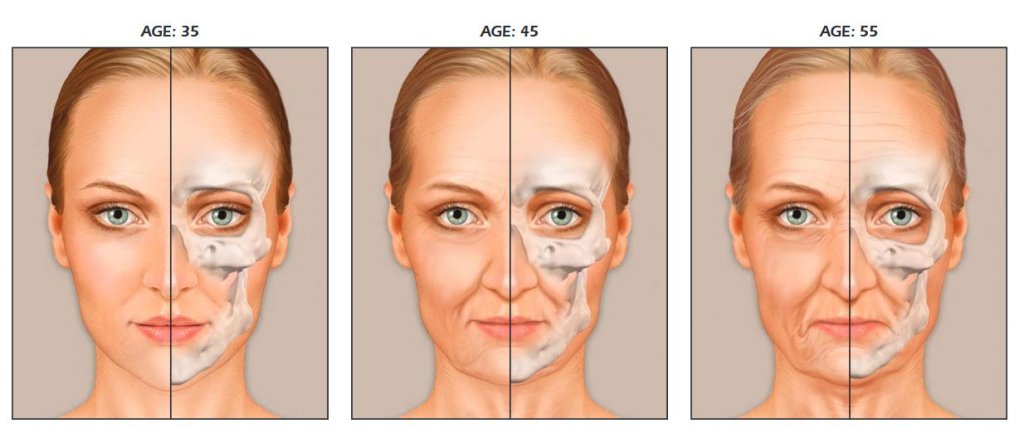
Bones in the middle of the face such as brows, nose, and upper jaw also shrink, leading to drooping brow bones and the formation of creases close to the eye and the appearance of crow’s feet.
Although these changes occur in both sexes, many occur earlier for women (typically in their young and middle-age years). While for men, most of the changes occur between middle and old age.
The Role of Fat
Youthful faces are supple and appropriately padded with facial fat in all the right places, yet without excess. As we grow older, the distribution of facial fat tends to change. In some areas of the face (e.g., in the mouth and jaw), fat can accumulate excessively, leading to the impression of permanent puffiness.
More often, however, fat padding thins out and migrates, leading to deep creases, sunken cheeks, and other unwelcome changes. The natural ageing process causes us to lose about 10% of the fat in our face at age 35 and an additional 5-10% every 5-10 years after that. By the age of 55, you may have lost 40% of the fat in your face, which once gave it a plump, full, youthful appearance. Additionally, the skin becomes thinner and rougher in texture, contributing to a rough, wrinkled appearance.
Of particular cosmetic significance is the so-called malar fat pad (a triangular fat pad adjacent to the base the nose). It’s thinning and shifting is a major factor in the development of nasolabial folds (deep laugh lines). The causes of redistribution of facial fat are not entirely clear but may include age-related shifts in hormonal balance, repeated facial movements, certain disease conditions and so forth.
How to Treat the Signs of Facial Ageing
Today, many treatment options exist that can soften the signs of ageing. The first step should be a facial mapping assessment to determine how to bring symmetry to both sides of the face and reintroduce a homogenous skin tone and texture. Doing it this way maintains a natural, healthy look.
Patients will often come to Sharma Skin & Hair Surgery and point out a specific line they don’t like. While a specific line is important to address, it is more important to look at how the face looks as a whole since treating an individual line could make the patient appear unnatural.
Patients tell us their friends are saying they look tired, sad or grumpy, yet they feel great. It’s typically not a single wrinkle or line that is causing this impression but multiple factors. It’s important to address the face as a whole to determine the right course of treatment.
Get a Personalized Consultation
Dr. Sharma offers a personalized consultation to address your specific needs and answer any questions or concerns you may have. He works closely with each and every patient to develop a treatment plan that will help you look and feel your best.
With extensive experience in cosmetic dermatology, aesthetic surgery, facial resculpting, and weight loss medicine, Dr. Sharma is excited to offer his patients the best care possible. It’s his opinion that consultation and patient education are the most important aspects of any cosmetic treatment.
Choose from in-clinic or virtual consultations
Medically reviewed by
Updated on
Have a question?
Find out how we can help you look feel your absolute best
Contact us 780-476-7970